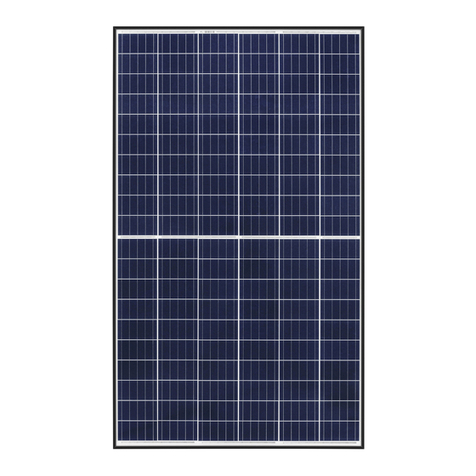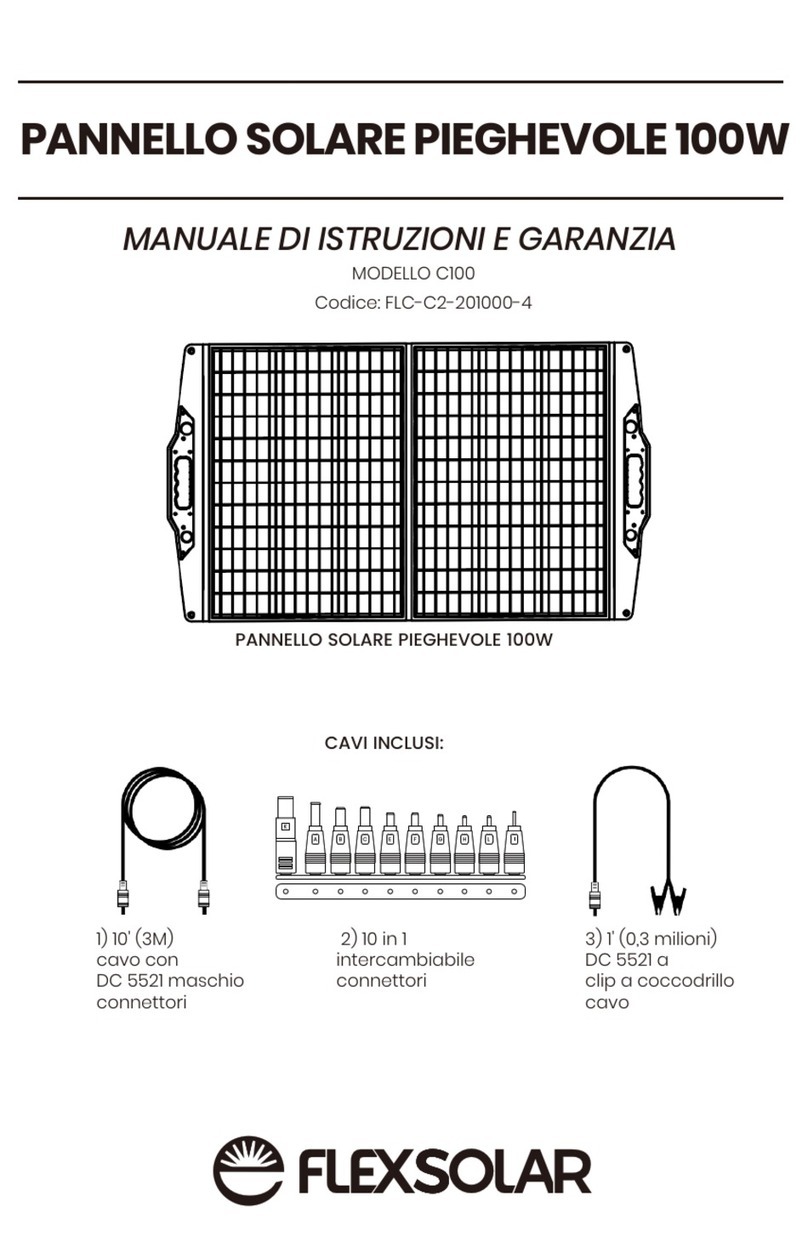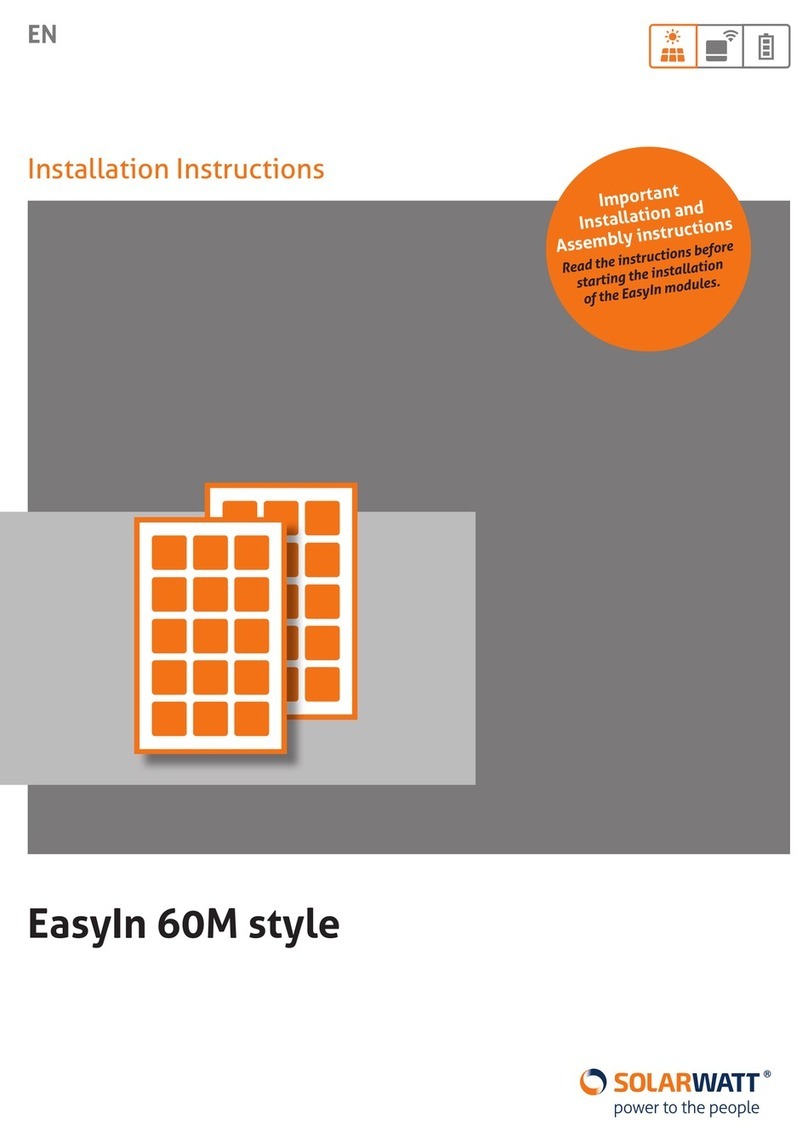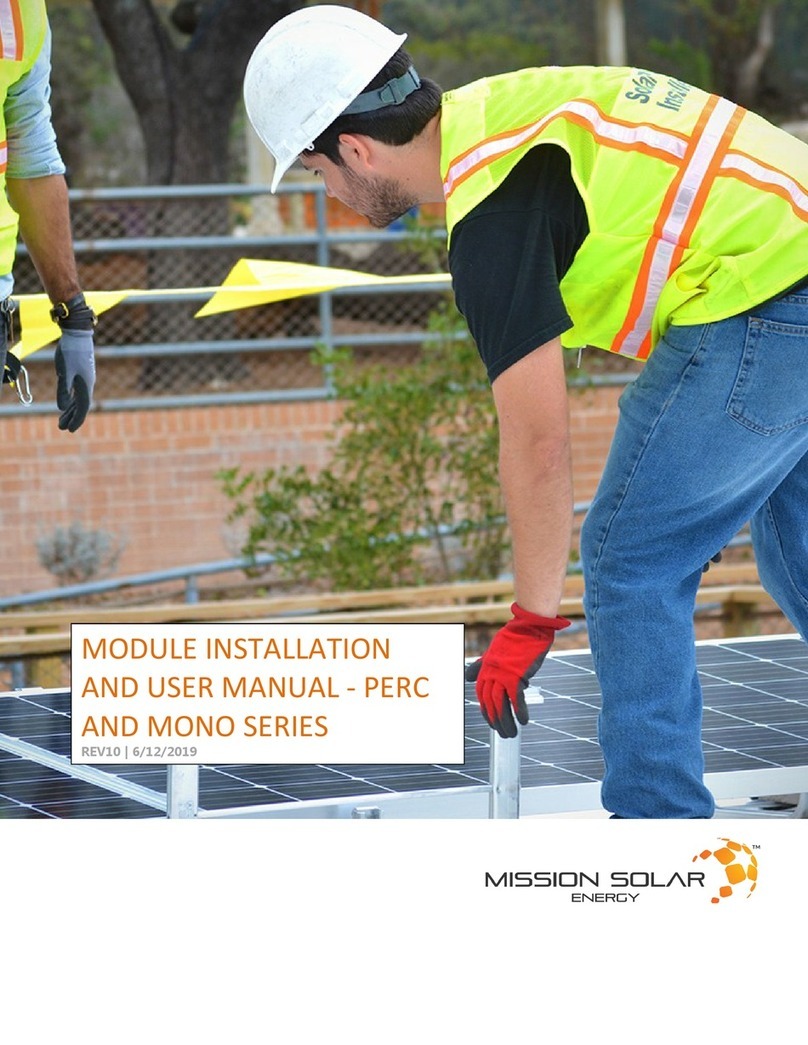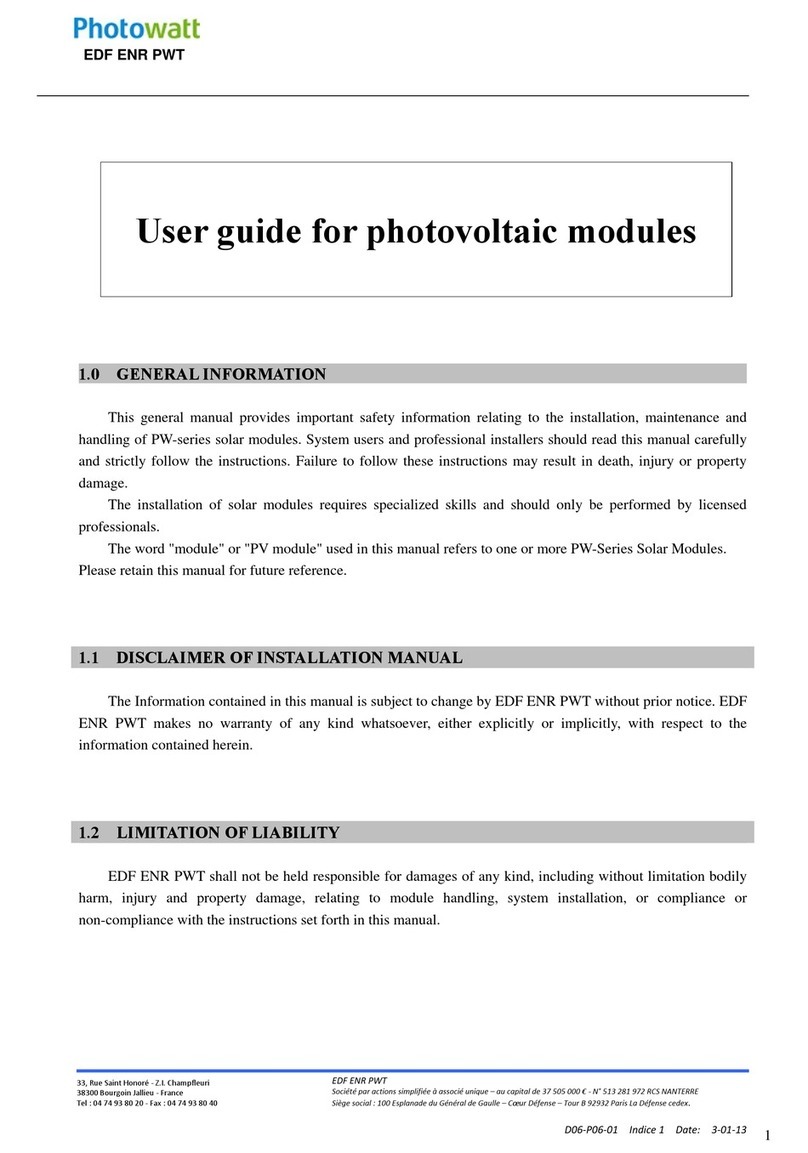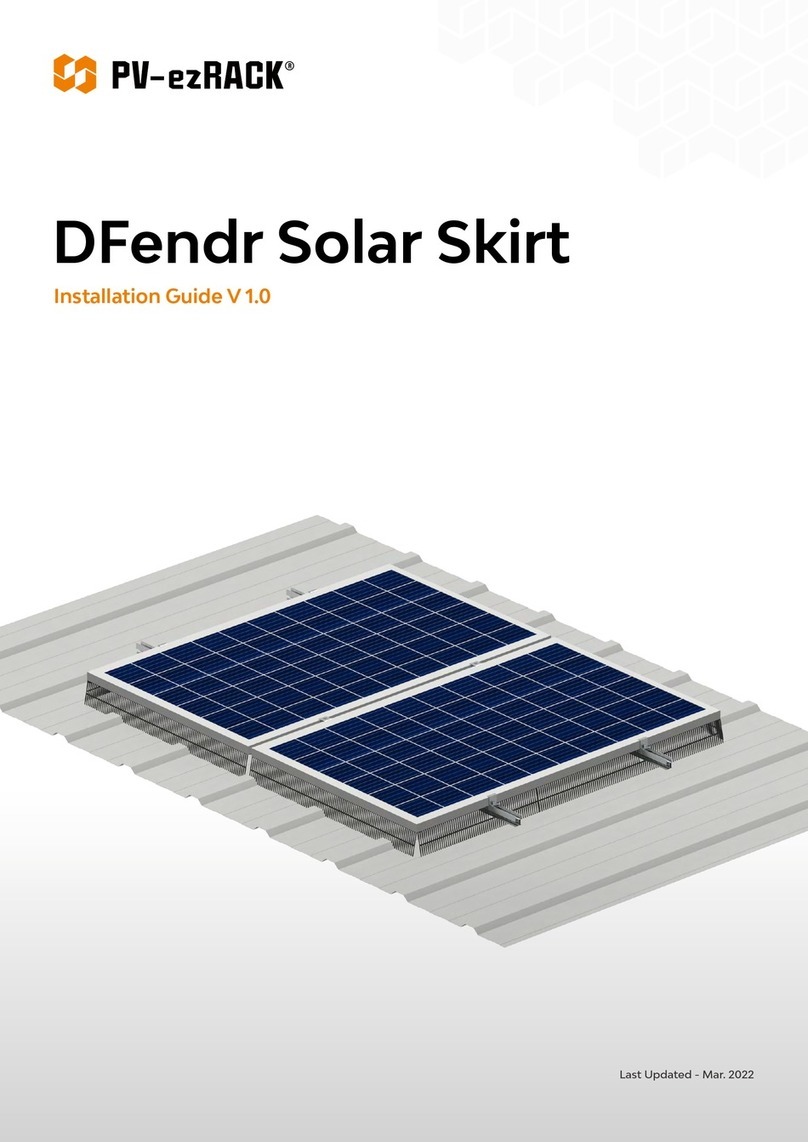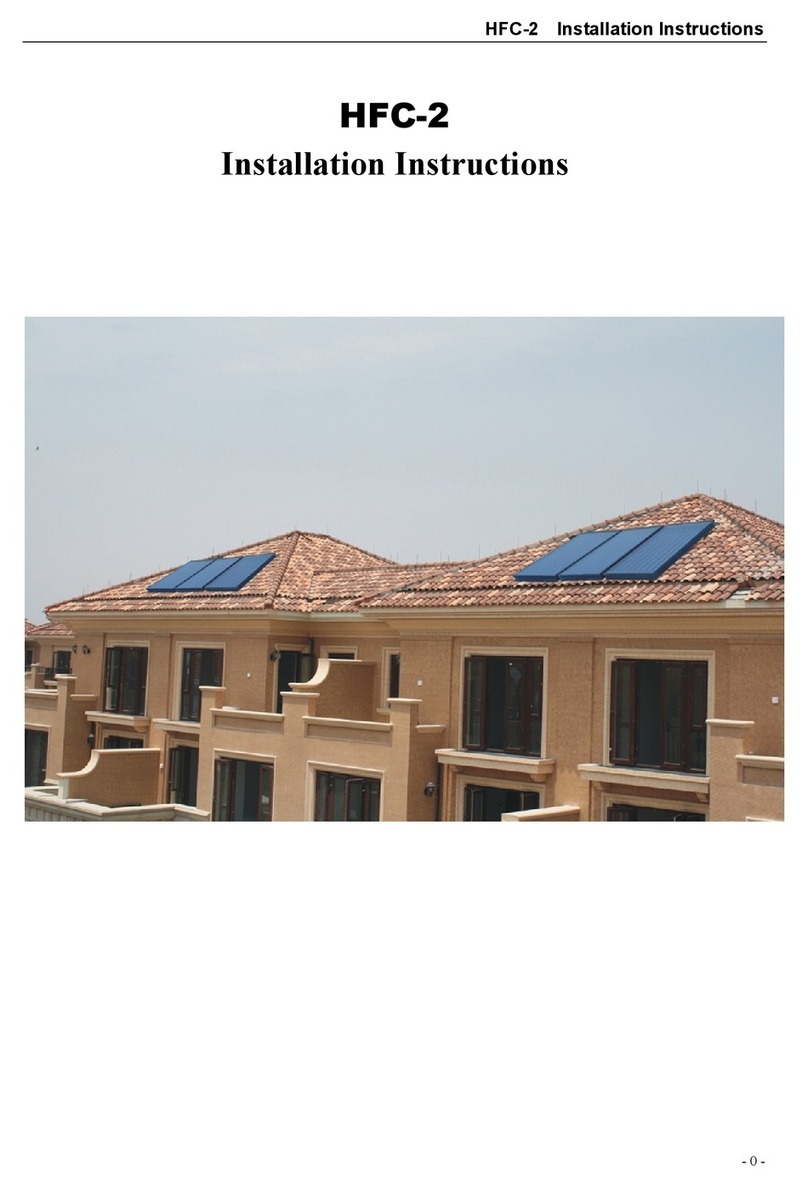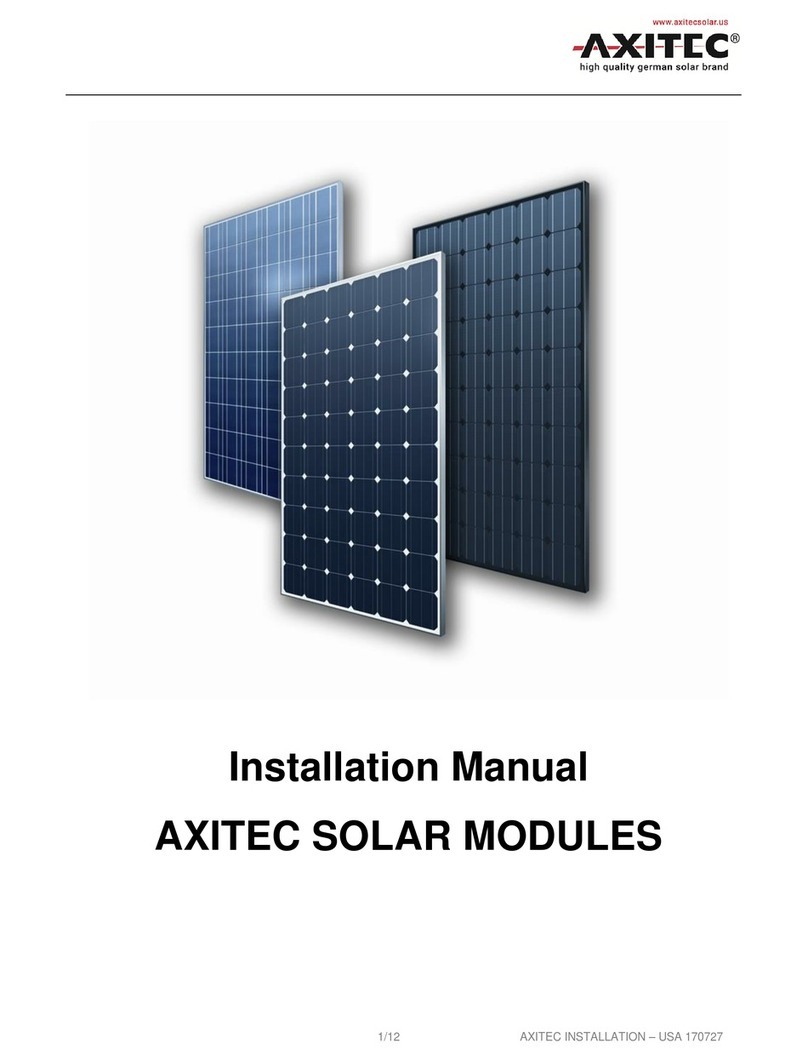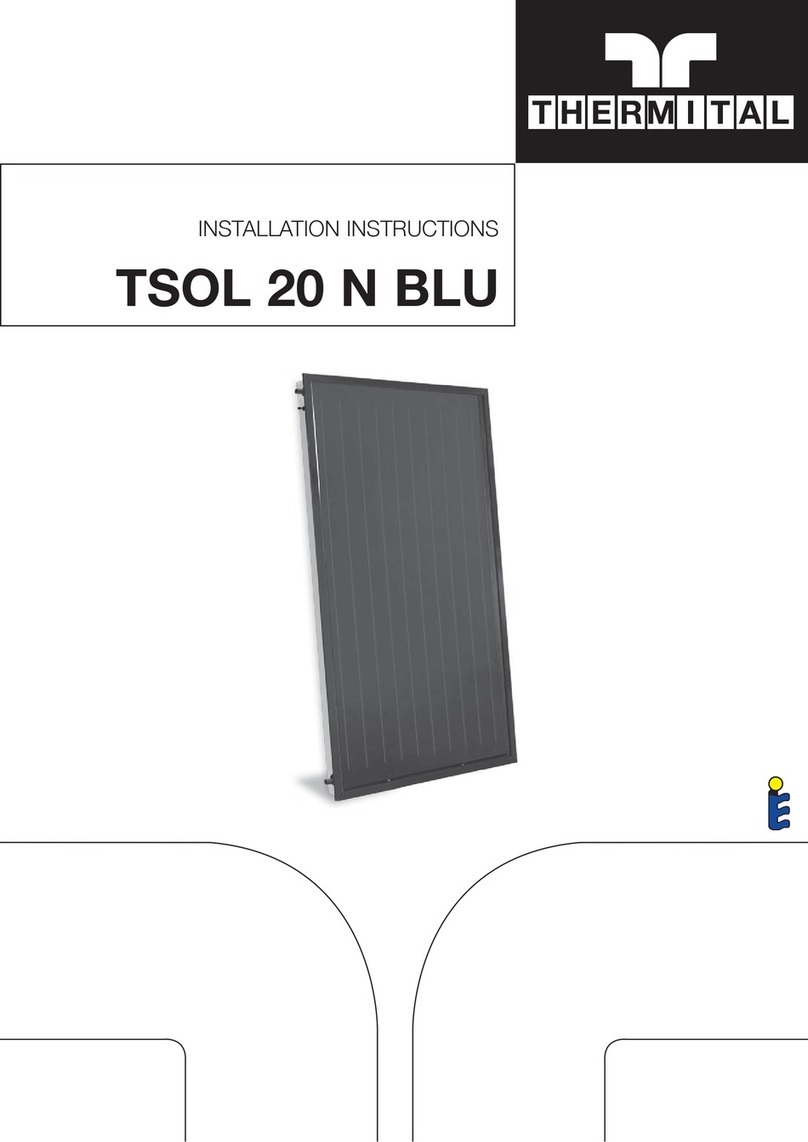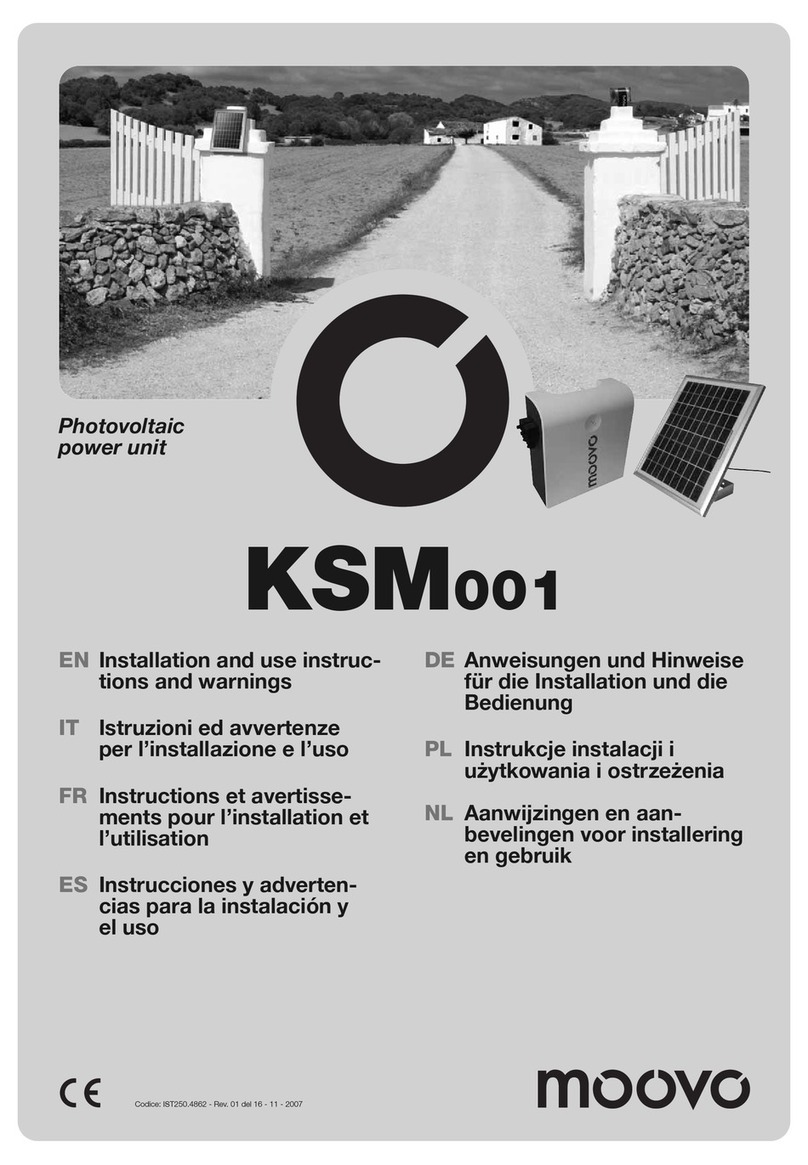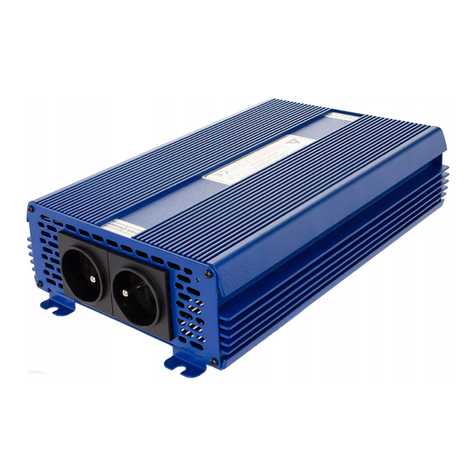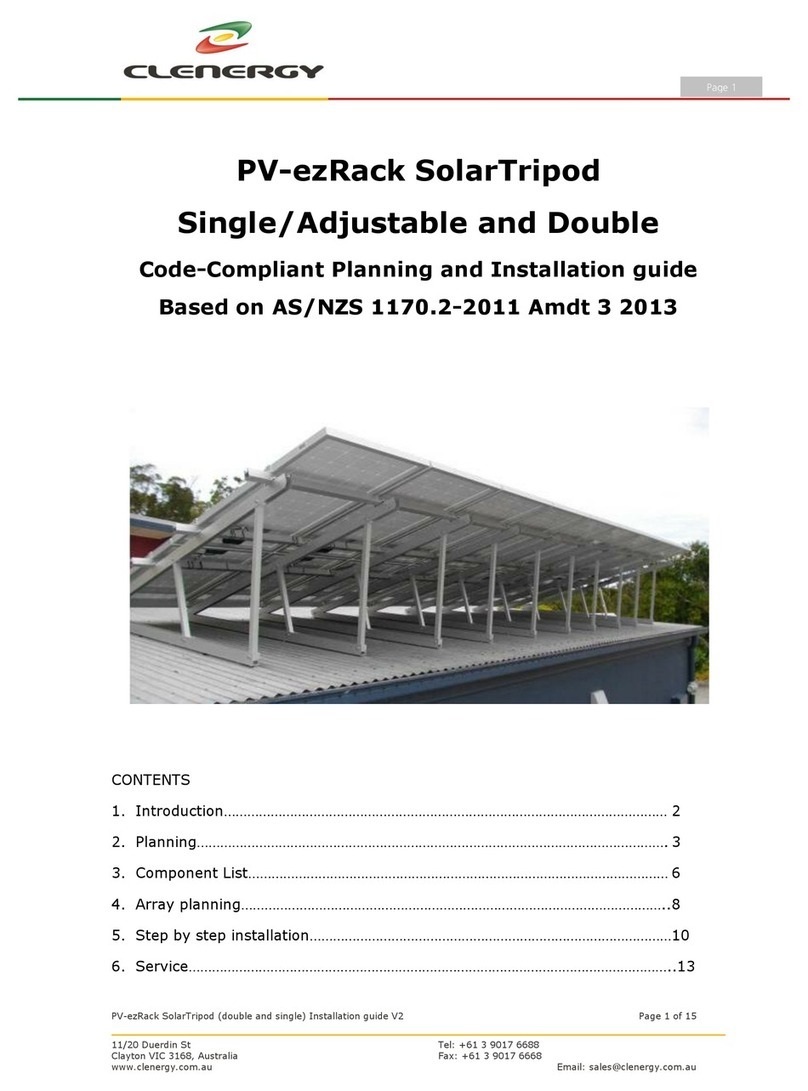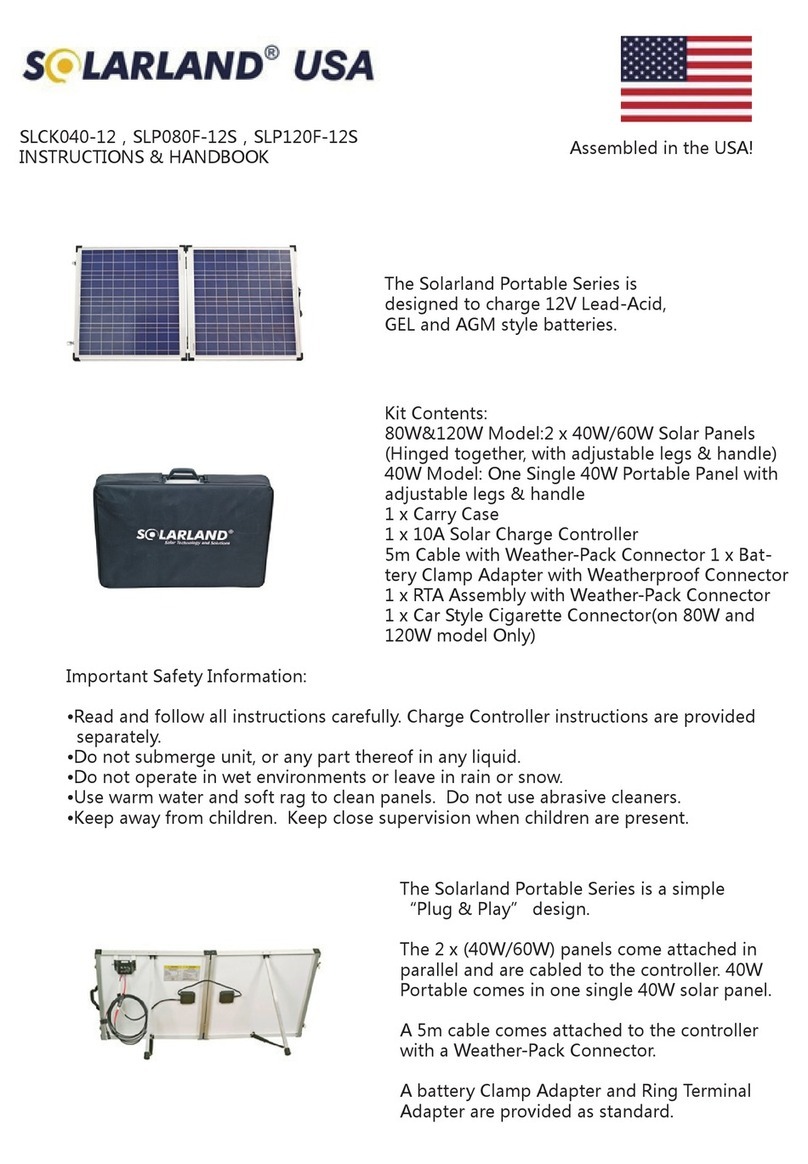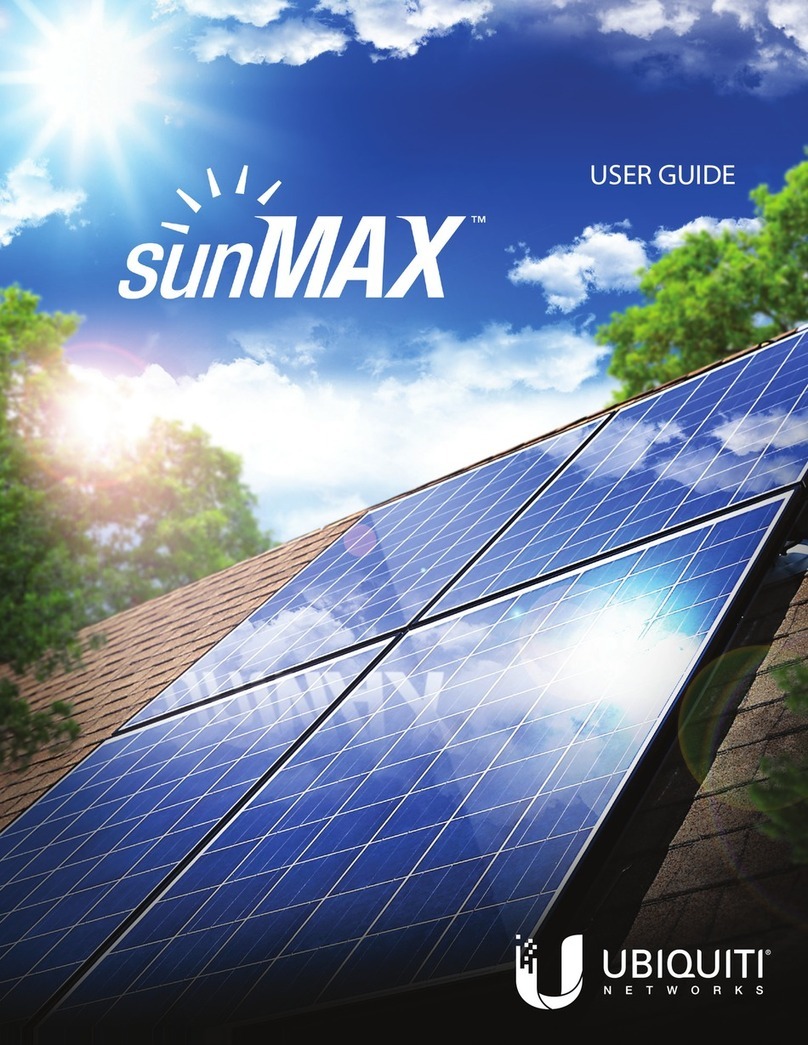
D69-P06-01 GB R6 01/07/2020 www.photowatt.com
6
5.0
MODULE INSTALLATION
PRECAUTIONARY MEASURES
AND GENERAL SAFETY
• Prior to installing modules please obtain infor-
mation about any requirements and necessary
approvals for the site, installation and inspec-
tion from the relevant authorities.
• Check applicable building codes to ensure that
the construction or structure (roof, facade, sup-
port, etc.) can bear the module system load.
• PW-series solar modules have been qualiied for
Application Class A (equivalent to Safety Class
II requirements). Modules rated under this class
should be used in systems operating at voltage
above 50 V or power above 240 W, where gene-
ral contact access is anticipated.
• EDF ENR PWT modules have been certiied as
Type 1 or Type 4 according to UL 1703 and Class
C according to IEC 617302, please refer to the
datasheet or the product nameplate for the de-
tailed types.
• Consult your local authority for guidelines and
requirements for building or structural ire
safety.
UL 1703 SYSTEM FIRE RATING REQUIREMENTS
• A photovoltaic systems composed of UL 1703
certiied modules mounted on a UL 2703 cer-
tiied mounting system should be evaluated in
combination with roof coverings in accordance
with UL 1703 standard, with respect to meeting
the same ire classiication as the roof assembly.
• Mounting systems with a System Fire Class Ra-
ting (Class A, B or C), tested in conjunction with
ire rated “Type 1” or “Type 4” rated modules,
are considered acceptable for use with Cana-
dian Solar Inc. modules, provides the mounting
system does not violate any other requirements
of this manual.
• Any mounting system limitations on inclination
or accessories required to maintain a speciic
System Fire Class Rating should be clearly spe-
ciied in the installation instructions and UL 2703
certiication of the mounting system supplier.
• When installing modules, ensure the suppor-
ting roof has a ire resistant roof covering rated
for the application.
• The ire rating for this module is only valid
when the product is installed as speciied in the
mechanical mounting instructions.
ENVIRONNEMENTAL CONDITIONS
• The module is intended for use in general
open-air climates, as deined in IEC 607212-
1: Classiication of environmental conditions
Part-21: Environmental conditions appearing in
nature - Temperature and humidity.
• Please consult the EDF ENR PWT technical
support department for more information on
the use of modules in special climates, , such
as an altitude greater than 2000 m.
Do not install modules near open lames or
lammable materials.
Do not immerse modules in water or
constantly expose modules to water (either
fresh or salt) (i.e. from fountains, sea spray).
• Exposing modules to salt (i.e. marine
environments) or sulfur (i.e. sulfur sources,
volcanoes) incurs the risk of module corrosion.
• Do not expose modules and their connectors
to any unauthorized chemical substances (e.g.
oil, lubricant, pesticide, etc.), as modules may
incur damages.
• Failure to comply with these instructions will
void EDF ENR PWT limited warranty.
INSTALLATION REQUIREMENTS
• Ensure that the module meets the general
technical system requirements.
• Ensure that other system components do
not damage the module mechanically or
electrically.
• Modules can be wired in series to increase
voltage or in parallel to increase current. To
connect modules in series, connect the cables
from the positive terminal of one module to
the negative terminal of the next module. To
connect in parallel, connect the cables from the
positive terminal of one module to the positive
terminal on the next module.
• The quantity of bypass diodes in the module's
junction box may vary depending on the model
series.
• Only connect the quantity of modules that
corres- ponds to the voltage speciications of
the inverters used in the system. In addition
modules should not be connected together
to create a voltage higher than the maximum
permitted system voltage stated on the
module nameplate, even under the worst local
temperature conditions (see Table 1 for the
correction coeicients that apply to opencircuit
voltage).
